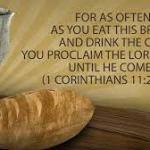On Wirzba, This Sacred Life: Humanity’s Place in a Wounded World

What is humanity’s purpose in this world? Or are we the end for which every other thing exists. Can we find purpose in the universe, given that science isn’t geared for anything like purpose? Or is competition for limited resources the rule for all life forms and for individuals within our species as well? Would the right answer to questions like these help turn around a world bent on self-destruction? Maybe it’s only a hope that says, Yes; but Norman Wirzba shares that hope. In This Sacred Life, he appeals to traditional beliefs and religions, especially Christianity, to clarify his hope as a call to recognize the sacred.
Wirzba approaches the sacred in three steps.
Wirzba writes with an eye on the harm Earth’s human inhabitants visit on the planet. Scientists think human actions are now the major force changing Earth’s natural systems. They think in terms of a new era of planetary history, the Anthropocene. The dangers of the Anthropocene are the leading idea in Wirzba’s Part I, “Assessing our Situation.”
Part II, “Turning to Fundamentals,” introduces two metaphors for healthful existence on the planet. To thrive spiritually and even materially, we must be “rooted” to place and community. And the world in which we find our roots is a “meshwork.” Wirzba borrows the unusual term from British anthropologist Tim Ingols. I think of being enmeshed. Wirzba says, “[T]he borders between organic and inorganic [and between the world and us] are constantly being blurred.” (p. 84)
Part III is “This Sacred Life.” I’m used to thinking some things are sacred and others not. Like the set of fancy dishes inherited from Grandma. They stay on the shelf, set apart from ordinary tableware, saved for special occasions. Or like the people the God of the Old Testament sets apart from all other peoples. But if all life is sacred and life stretches into and opens to penetration by its environment, that raises a question. Where, if ever, does the sacred end and the secular begin? What is the sacred set apart from?
Wirzba thinks differently about the sacred. The sacred is the “gratuitous and gracious presence” that people in just about any culture seem to encounter in their “engagement with places and fellow creatures.” (p. 143) Wirzba further clarifies with the Christian concept of creation. God gives himself in the gift of the created world. If everything is gift, including the creatures that we are, then everything is sacred.
Combining the two concepts of the sacred
Living as creatures in response to the gift of creation, Wirzba thinks is the way the world can return to wholeness and health. But it’s obvious that the human race has not done that. We have lived, instead, as “masters of the universe.” As if the universe has no meaning apart from what it means for us. As if the world is infinitely pliable to our demands. The latter is scientific nonsense, of course; but science encourages the former myth by setting aside the question of meaning.
But let’s go back to Wirzba’s idea of creation as gift. For there to be a gift there has to be a receiver, one who recognizes the gift as a gift. That closely connects the human race to creation’s giftedness while allowing the gift to be entirely God’s action. In our best – graced – moments, we have allowed the gift to be gift. We have accepted even ourselves and our virtues as gift. Without that acceptance, God’s giving fails to reach its natural end.
As gift, the world is indeed sacred. But as gift refused or ignored or spat upon, the world loses that sacred character. Adam’s fall from grace brings with it a fallen world. The world as fallen is the secular world out of which God draws a sacred world, like constituting a holy people out of slaves in Egypt. On that future day when humans live the creaturely life that God planned, then all the world will be sacred. Only the memory of the sacred’s counterpoint, the secular, will remain.
The Anthropocene and hope for the world
One of the debates that Wirzba has with himself concerns the proper name for the age we seem to be entering. Perhaps instead of Anthropocene we should call it Capitalocene. After all, it’s only since the heedless material progress that capitalism engenders that humanity has acquired the choice of destroying its world or not. An economic system and ideology has made us the major factor determining the future of planet Earth.
Wirzba admits that reality but sees it in the context of what humans have done to their world since at least the rise of agriculture. The only difference between then and today, as Wirzba sees it, is that now Earth has had about all it can take. Commentator Jonathan Tran, in a Syndicate symposium, holds an opposing view. He sees the expansion of human power beyond what nature can cope with as a qualitative difference. It’s not the human as such but the capitalist that ushers in a new age of the world.
Personally, between “Capitalocene” and “Anthropocene” I much prefer the latter, at least for the sound of it. There’s no harm in the more general term, Anthropocene, if we recognize it didn’t have to turn out as it has. We’ve made choices along the way, and we could reverse ourselves.
We have a generation or two to accomplish that prodigious feat. And what if we do? It could mean returning Earth and its natural process to their natural role as chief drivers of planetary change. And will that entail the end of the Anthropocene? We might relinquish mastery for servanthood, God’s original plan for us. Anthropocene could be Earth’s shortest era by millennia. Or maybe we shouldn’t proclaim any new age just yet. There is still hope for the world.













